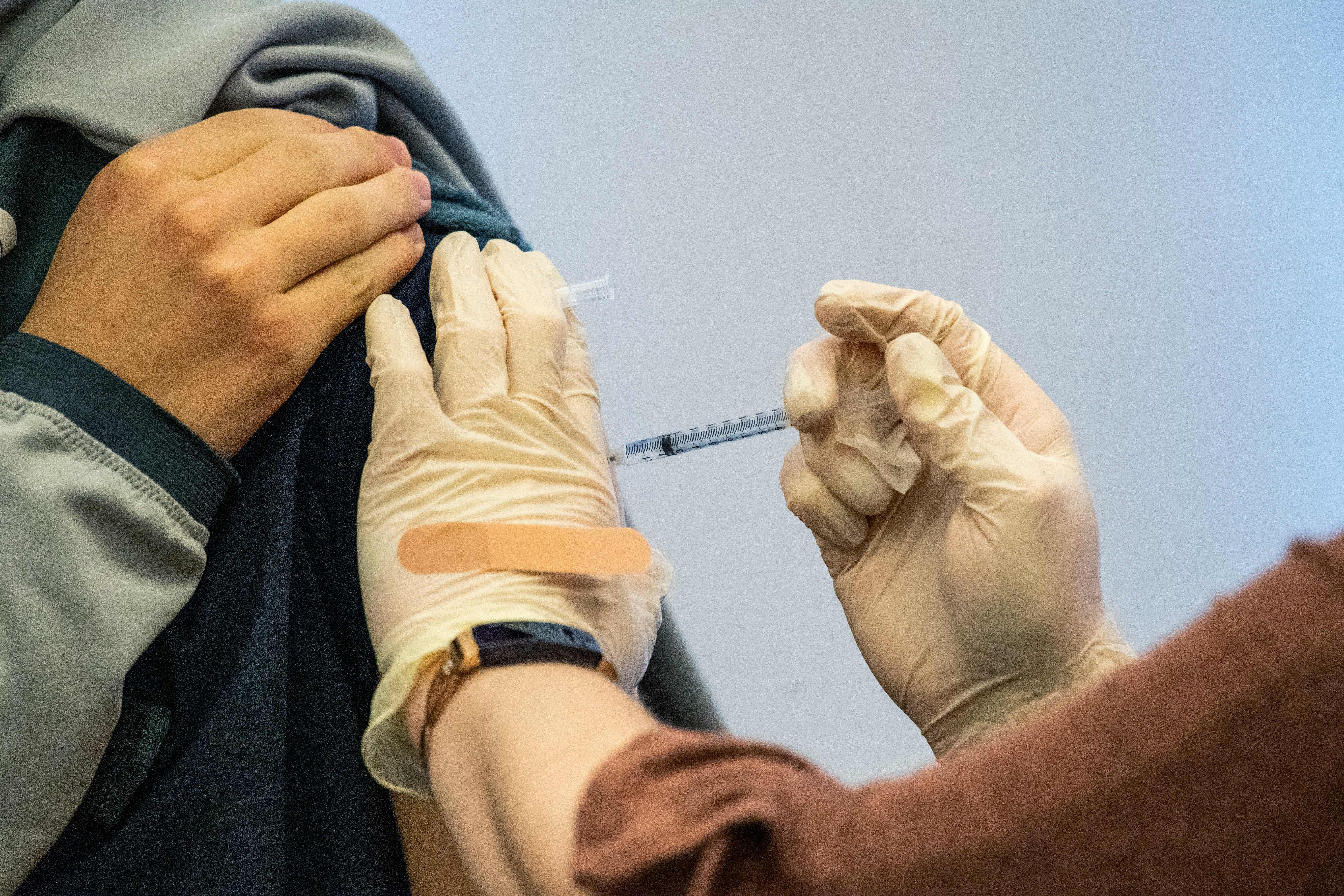Omicron-Specific COVID Boosters Are Coming

The U.S. Food and Drug Administration has advised vaccine makers to update COVID booster shots to target new forms of the Omicron variant. In calling for the change, the FDA heeded the recommendations of its Vaccines and Related Biological Products Advisory Committee (VRBPAC), which voted 19–2 in favor of Omicron-adapted boosters after a public meeting on June 28. New boosters could be rolled out this fall, but that will likely be too late to prevent the current surge in cases resulting from the Omicron subvariants BA.4 and BA.5 in the U.S. and other countries.
Existing vaccines target the ancestral form of SARS-CoV-2, the virus that causes COVID, which first surfaced in Wuhan, China. But although these shots still broadly protect against severe disease, “their effectiveness does appear to wane with time,” said Peter Marks, director of the FDA’s Center for Biologics Evaluation and Research, during the late June VRBPAC meeting. Each new variant has been successively more contagious than its predecessor. And throughout the world, Omicron subvariants have been fueling increased infections and hospitalizations—the latter especially among older people.
The planned updates are currently limited to mRNA vaccine boosters developed by Moderna and the Pfizer-BioNTech collaboration. These companies are now racing against time to test new products and generate the millions of doses needed to supply the FDA’s planned fall booster campaign.
Scientific American spoke with experts from academia and industry about the prospects for moving toward these shots.
How will the new boosters be different?
COVID vaccines to date have targeted only the ancestral virus. Per the FDA’s recommendation, in addition to that virus, the new boosters will target the BA.4 and BA.5 Omicron subvariants, which accounted for about 70 percent of new COVID cases in the U.S. as of July 2. In selecting those targets, VRBPAC members felt it was wise to match the boosters to currently circulating strains but without sacrificing the protection against severe disease that shots targeted at the ancestral virus have conferred. “We believed strongly that the current vaccines still work very well, and we didn’t want to lose that,” says Archana Chatterjee, dean of the Chicago Medical School and a VRBPAC member. But with new variants coming and going every three to four months, Chatterjee adds, there is no guarantee that BA.4 and BA.5 will still predominate when the fall booster campaign begins.
Can the Omicron-adapted shots be used for people who have yet to be vaccinated?
As things currently stand, the answer is no. The shots are intended for use only as boosters. Unvaccinated people will still be able to get the primary vaccine series based on the ancestral strain.
How well do the Omicron-adapted boosters work?
Evidence that has been public is so far limited only to what Pfizer-BioNTech and Moderna have revealed in press releases—specifically for updated boosters targeting the first Omicron variant, which is called BA.1. According to preliminary evidence, the shots induce levels of neutralizing antibodies—antibodies that help the body fight the virus—that are up to two times higher than those generated by the companies’ existing vaccines. Those data only tell part of the story, however, because “there’s no clear cutoff as to what levels of antibodies correlate with disease protection,” says Ofer Levy, a VRBPAC member and director of the Precision Vaccines Program at Boston Children’s Hospital. Furthermore, the degree to which Omicron-adapted boosters might trigger additional protection from immune cells called T cells and B cells remains unknown. Both companies have begun testing bivalent boosters targeting BA.4 and BA.5 but have yet to release any of the data publicly.
How long does the new boosters’ effectiveness last?
That is hard to say. So long as newly evolving variants emerge from Omicron, the protection could be durable. But if the next major variant comes out of the blue—as occurred with Delta and the original Omicron—then long-lasting protection is more questionable. Not all experts agree that Omicron-adapted boosters are even justified, based on current evidence, however. Paul Offit, a pediatrician at Children’s Hospital of Philadelphia, agrees on the need for a booster geared toward high-risk groups this fall. But he argues that so long as existing shots protect against severe disease and hospitalization, they fulfill this intended purpose. Offit was one of the two VRBPAC members who voted against updating the shots. “We all agree that the ancestral component needs to be there,” he says. “But will adding an Omicron component boost antibodies in a significant way against the next subvariant? There is no evidence that it will.”
Will the new boosters be made available to all age groups, including young children?
That remains unclear. In an e-mailed response to Scientific American, an FDA spokesperson wrote, “FDA expects that, based on the data that will be submitted by the manufacturers, it will be able to authorize the modified boosters for those populations that are deemed appropriate to receive them.” The agency declined to elaborate further on its review process, however.
What happens now?
Pfizer-BioNTech and Moderna both claim they can start delivering doses of a bivalent BA.4-BA.5 booster in October. The companies also say, however, that they need more guidance from the FDA on the sorts of data they need to submit for regulatory authorization. The wild card is how much clinical information with human participants the FDA will look for. The existing vaccines were authorized on the basis of large-scale clinical trials with tens of thousands of people. Omicron-adapted boosters are made using the same manufacturing platforms and materials. Companies hope the products will be authorized solely on basis of preclinical data showing adequate levels of neutralizing antibodies. “We would be able to make an October deadline as long as the FDA accepts preclinical data rather than the clinical data that has been standard for prior emergency use authorizations,” says Moderna spokesperson Elise Meyer. Anything else “would be a change in regulatory approach.”


